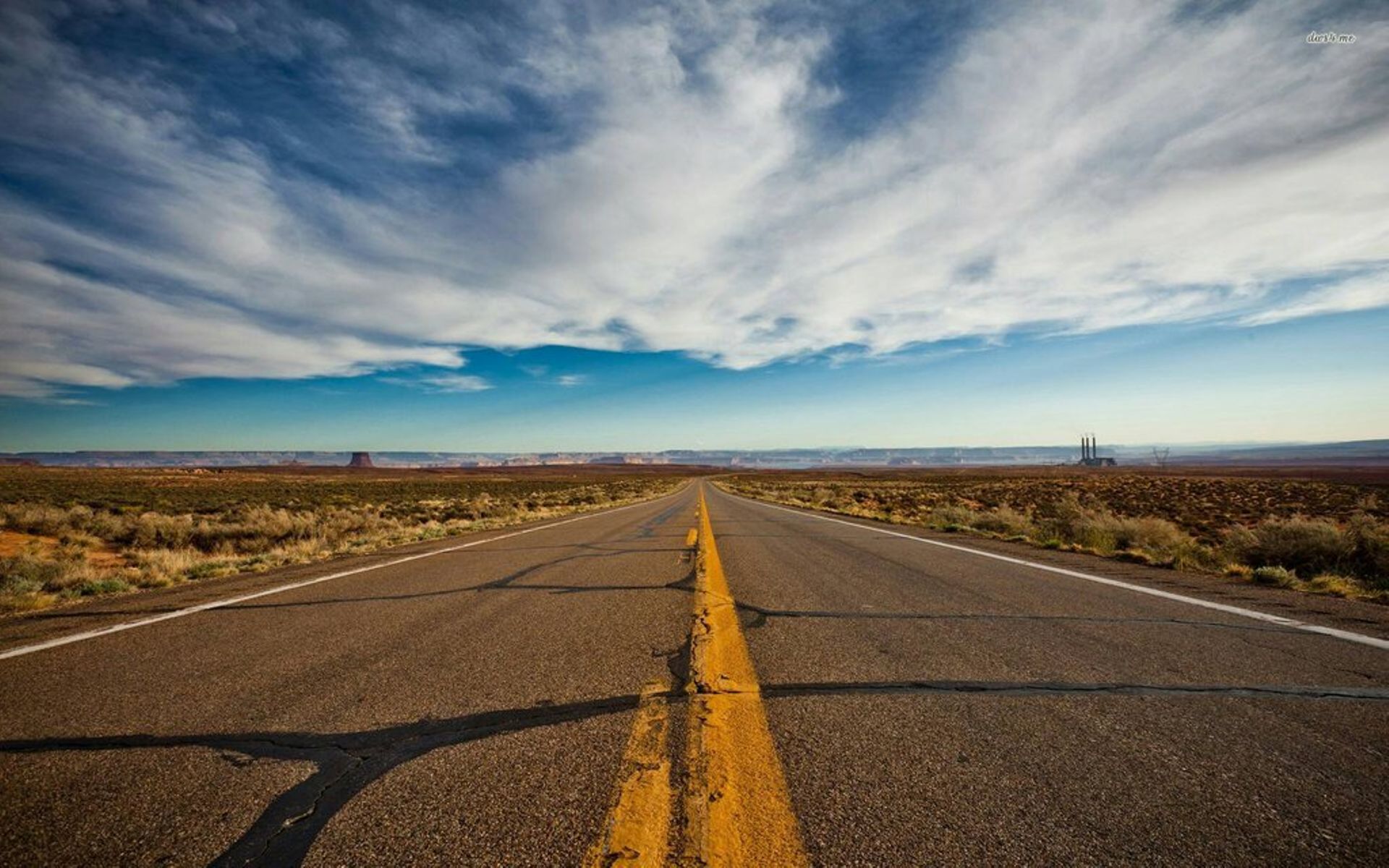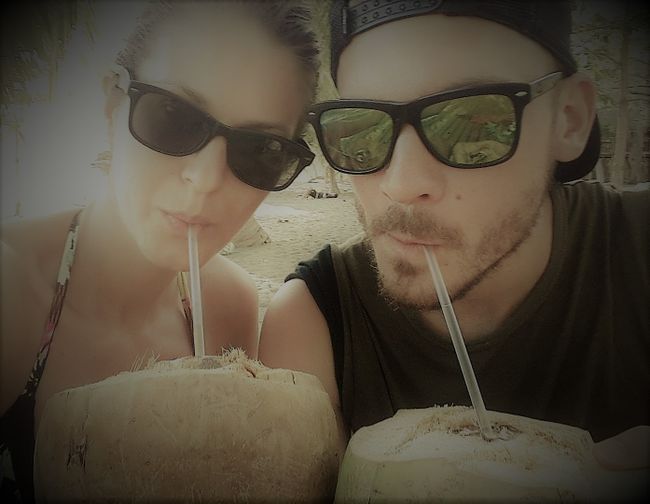Eine einsame Insel! - Islas de San Bernardo
Pubblicato: 01.02.2018
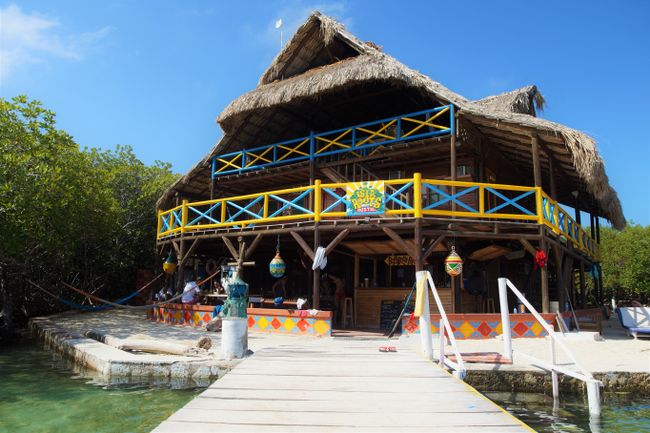
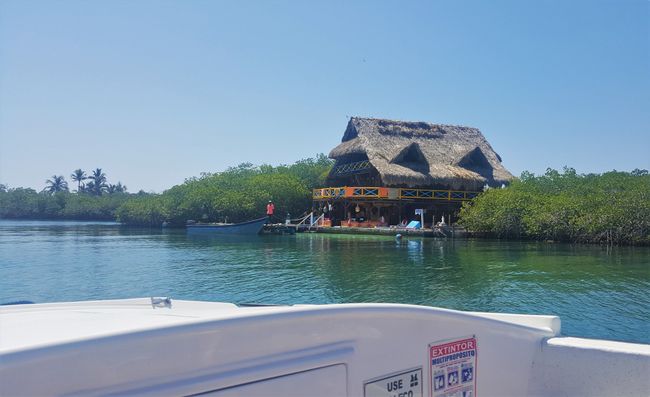
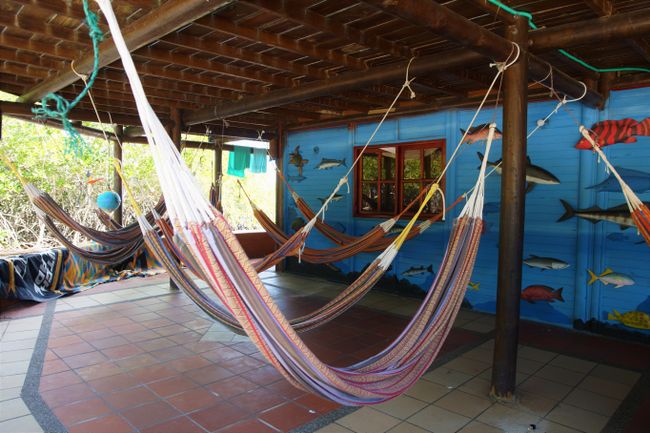
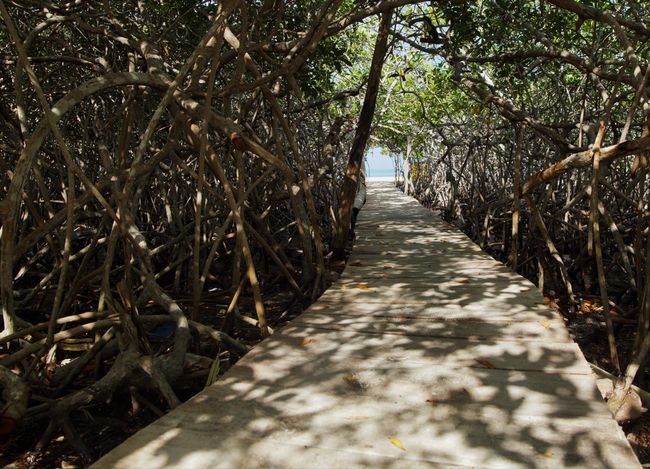
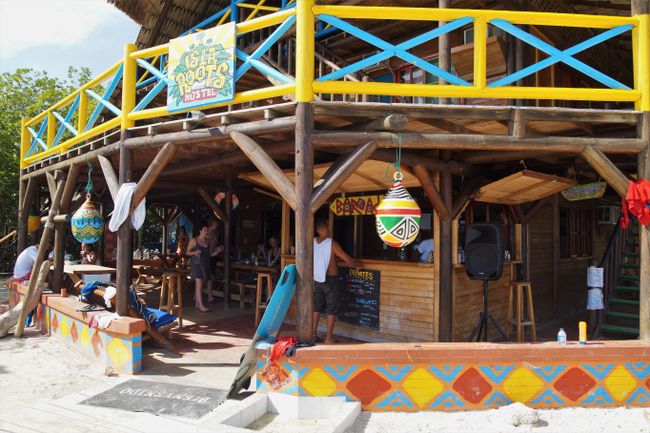

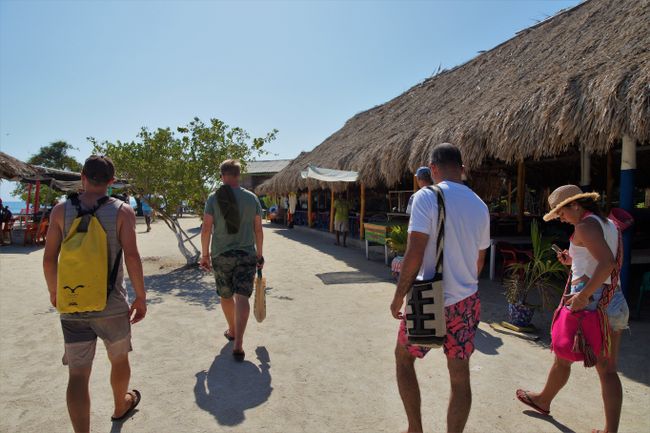
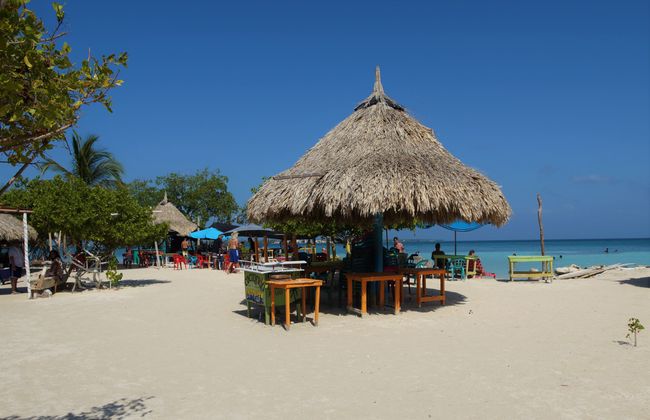
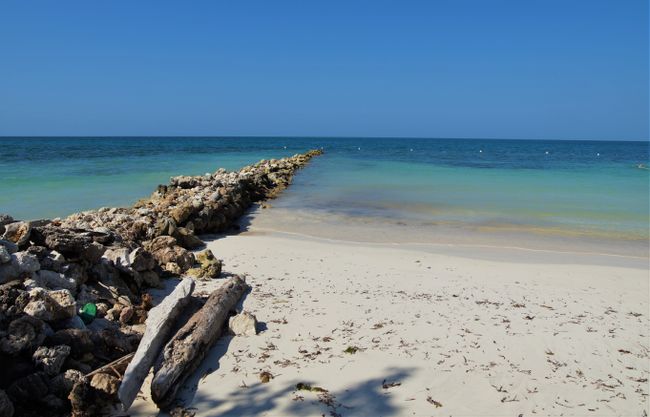
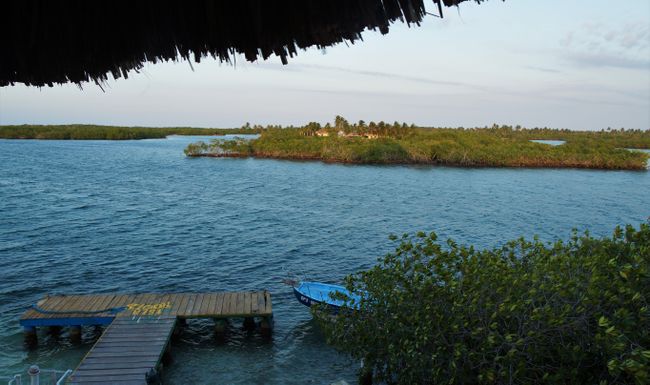
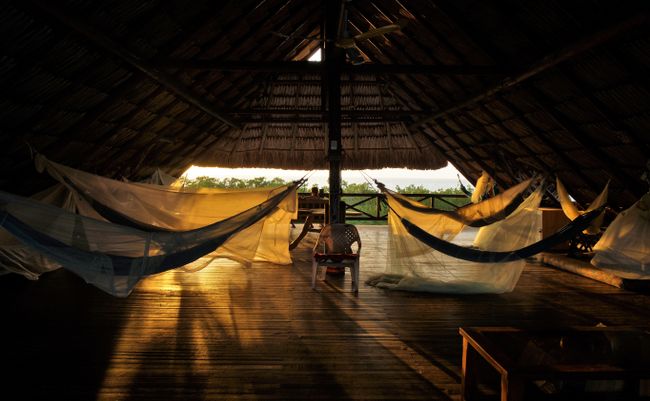
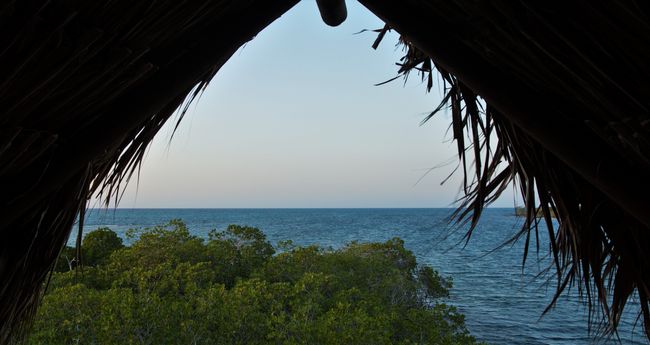
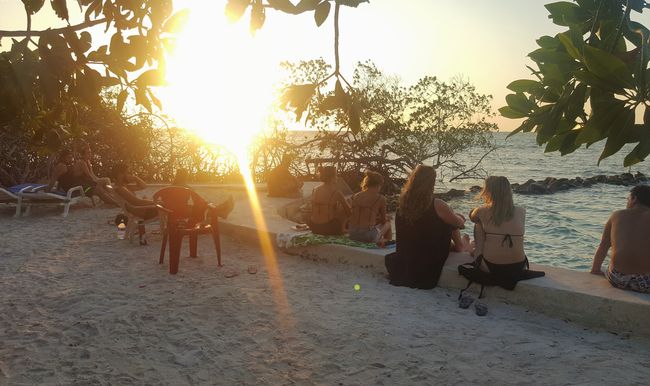
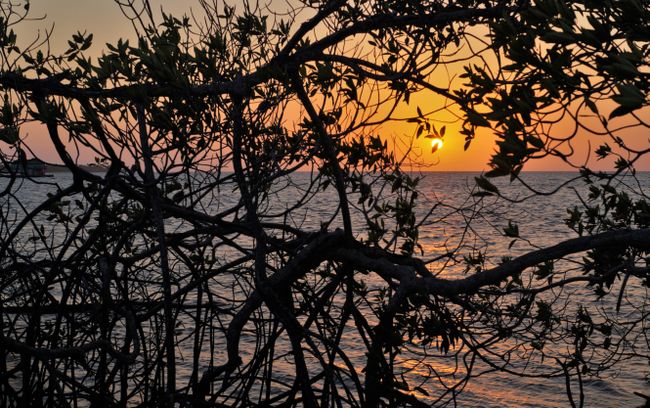
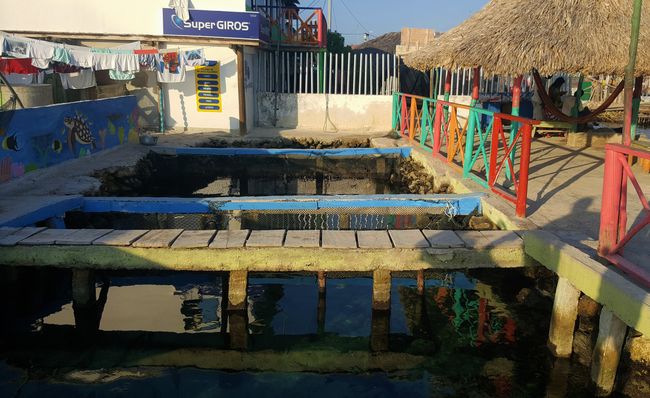
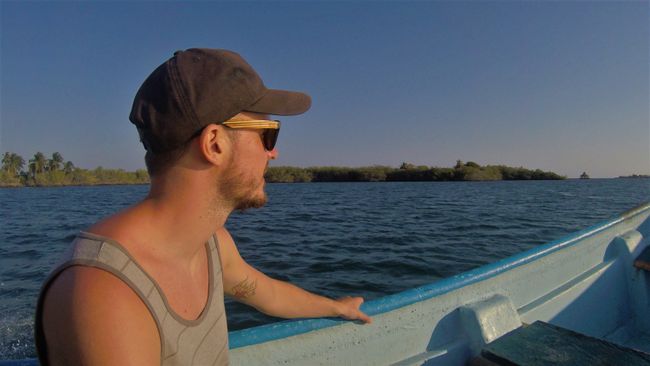
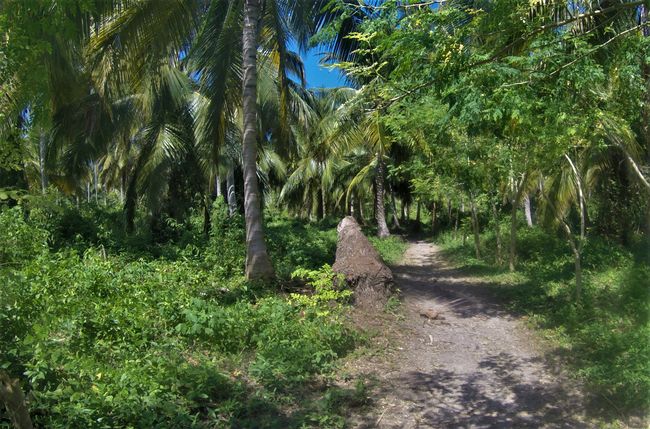
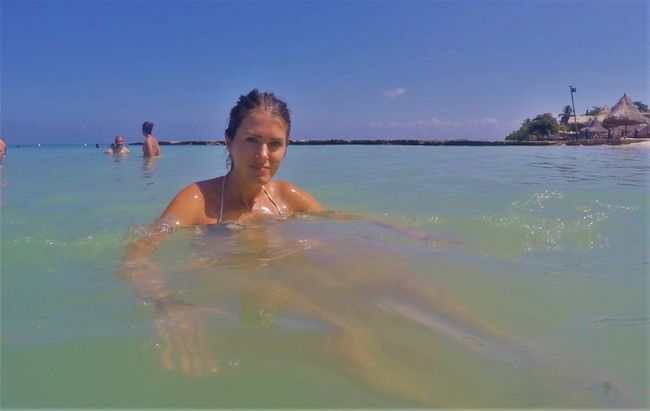
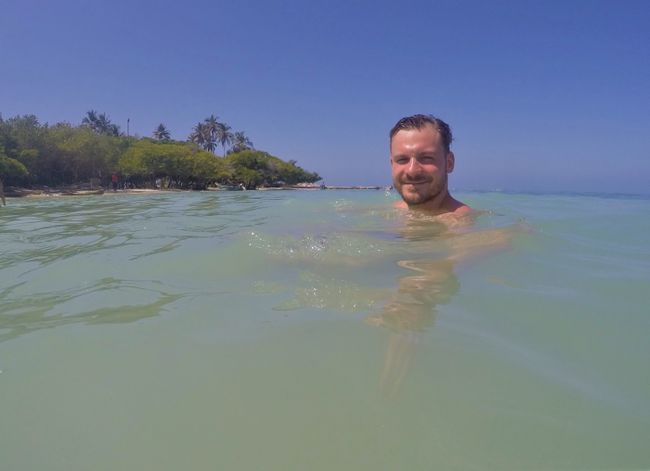
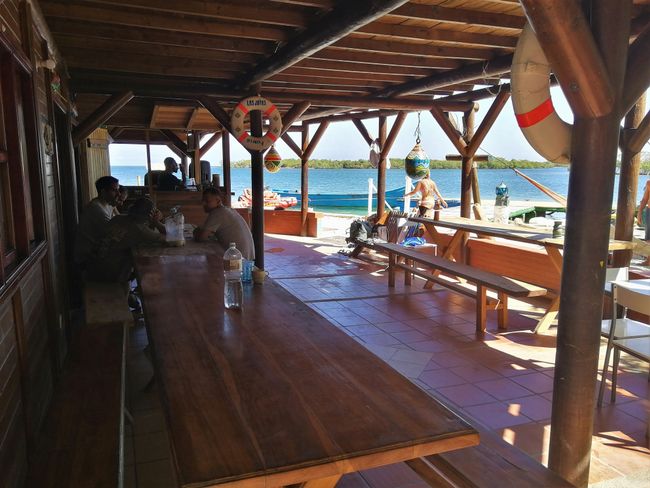
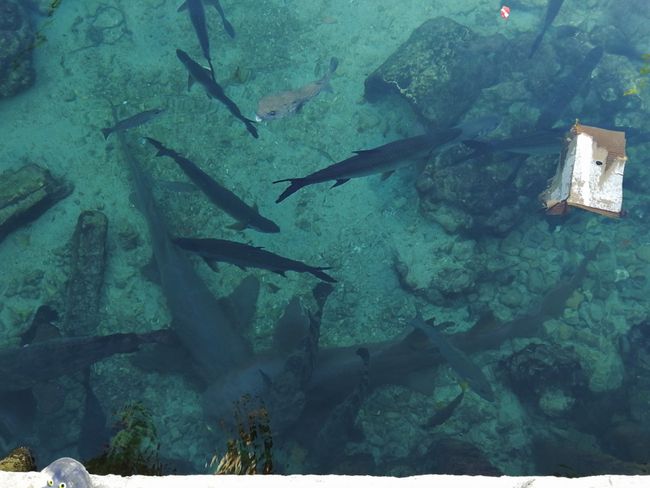
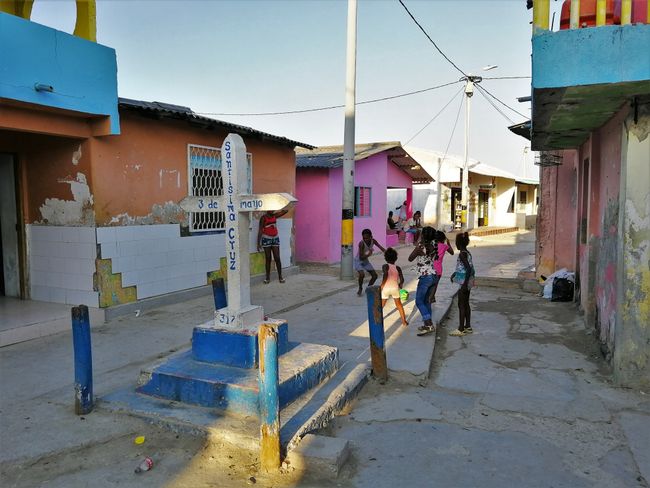
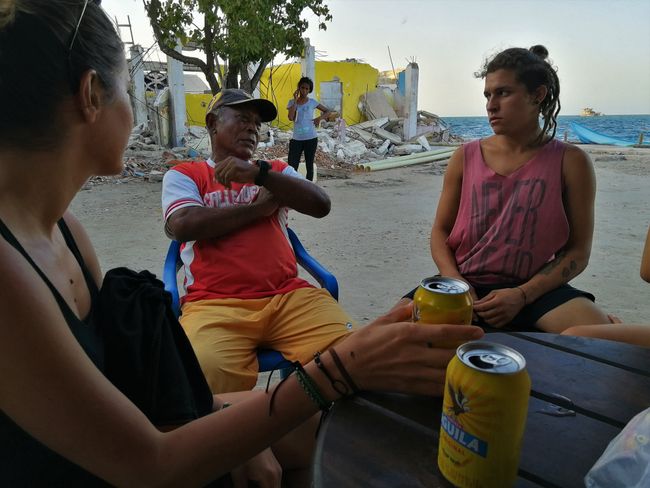
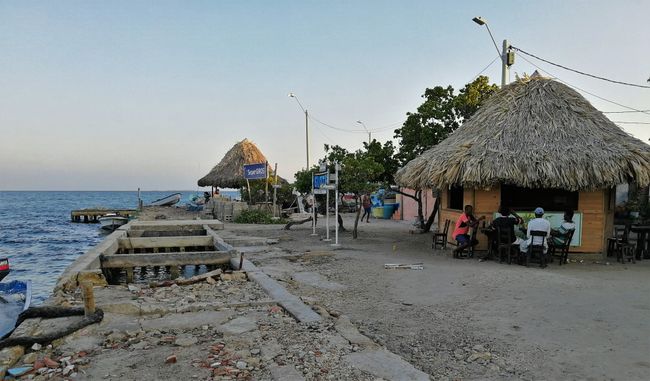
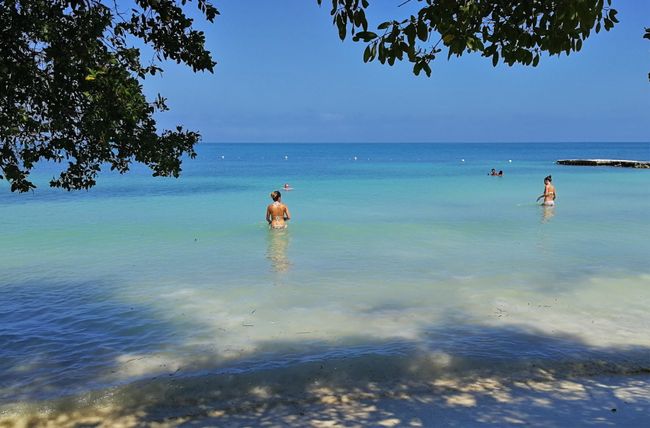
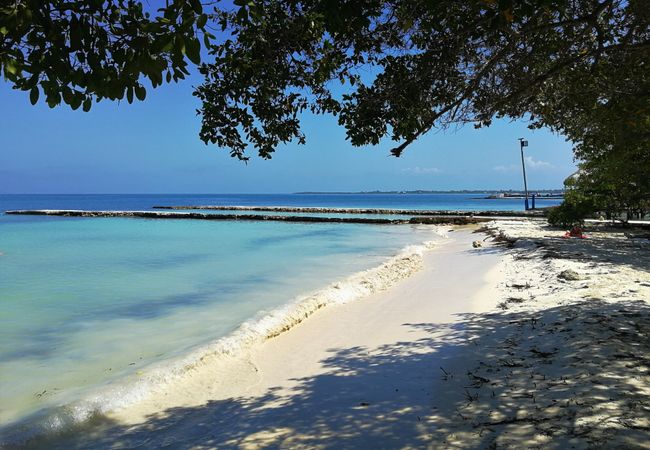
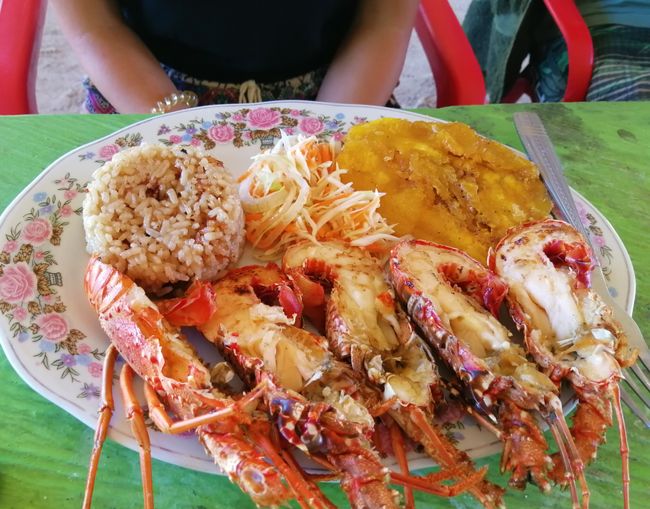
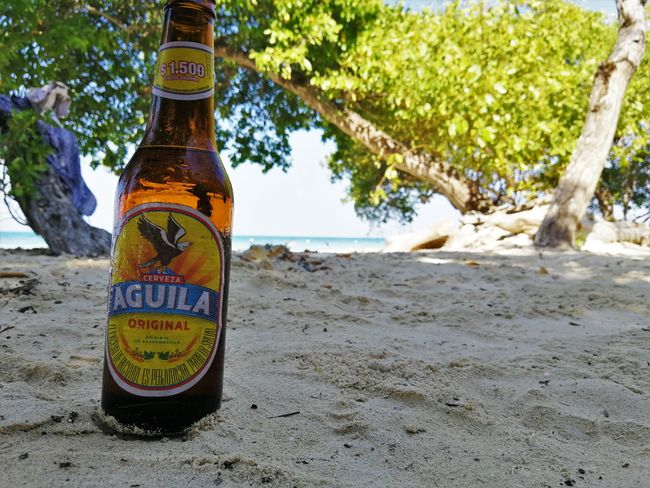
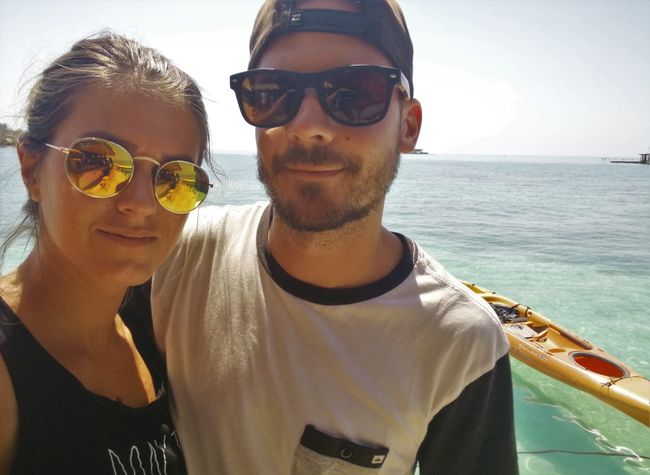
Iscriviti alla Newsletter
27/01 - 30/01
A private little island in the Caribbean Sea, surrounded by mangroves and crystal-clear water: That might sound like a luxury vacation in a 5-star resort, but 'Robinson Crusoe feeling' describes our stay much better....

Cartagena is the Colombian gateway to the Caribbean Sea. So, we thought if we're already there, we want to try out the island life in the Caribbean as well. Choosing from the numerous offers of dream resorts and hotels was not easy. We finally decided on the 'Isla Roots Hostel', which is located on a lonely little island belonging to the San Bernardo Archipelago. Our island was so small that even a bad swimmer could easily swim around it - the record is 5 minutes and 11 seconds. We took a two-hour speedboat ride from Cartagena to get there. Once again, we managed to be the last ones to board, so we didn't get seats under the protective awning - meaning we had to endure the scorching sun.

Upon arrival on the island, we checked in with the other newcomers and were then given a tour by the German volunteer Luisa.
The first stop was the sanitary facilities, where we were immediately informed that there was no running water and fresh water was strictly rationed. In front of the bathrooms stood a large barrel of saltwater, which was more or less (unfortunately, rather less) regularly filled by the staff. So, every time we used the toilet, we had to take a bucket of saltwater to flush afterwards. Freshwater for personal hygiene was only available at certain times - usually after dinner. The bathrooms had regular showers installed and according to Luisa, they were supposed to work - but they didn't once during our entire stay. Therefore, a barrel of freshwater was placed in front of the bathrooms and one could also fill a bucket of water and "take a shower" - but no more than one bucket per person. Initially, I briefly considered skipping the showers altogether, but after a few hours of sweat, saltwater, and sand, that was out of the question. Emi and I took turns being each other's shower: While one was washing, the other held the bucket and continuously poured water over the area to be cleaned. The procedure was quite cumbersome and we didn't get completely clean, of course, but it was enough to get rid of the worst.

The next stop was the kitchen. The meals were strictly scheduled: Breakfast from 8:30 to 10:00, lunch at 13:00, and dinner at 19:00. However, there wasn't much choice. The real question was: Fish or no fish? If you felt like treating yourself, you could order crab or lobster, which naturally came at a price. For lunch, we usually had vegetarian dishes and for dinner, fresh fish.
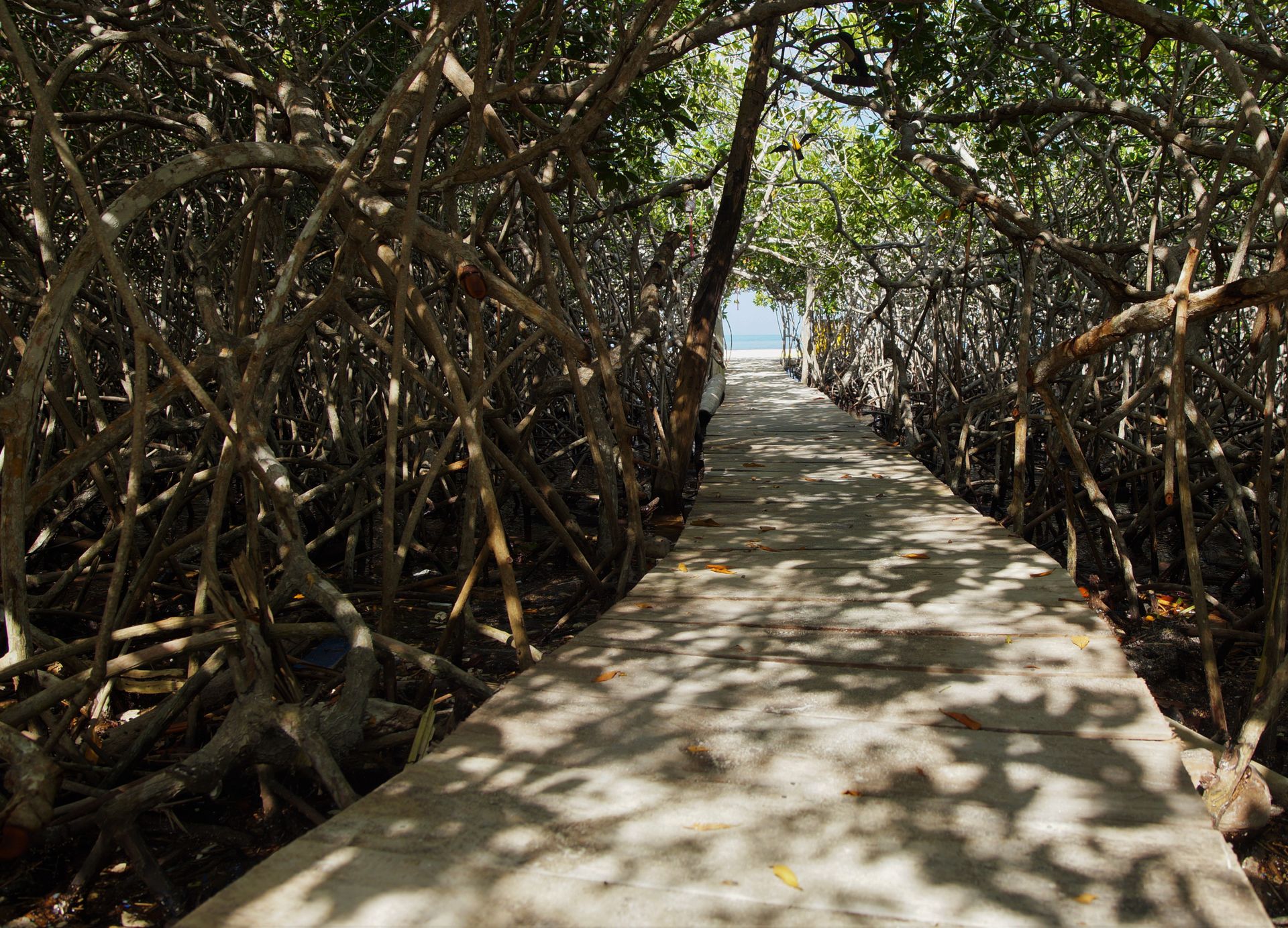

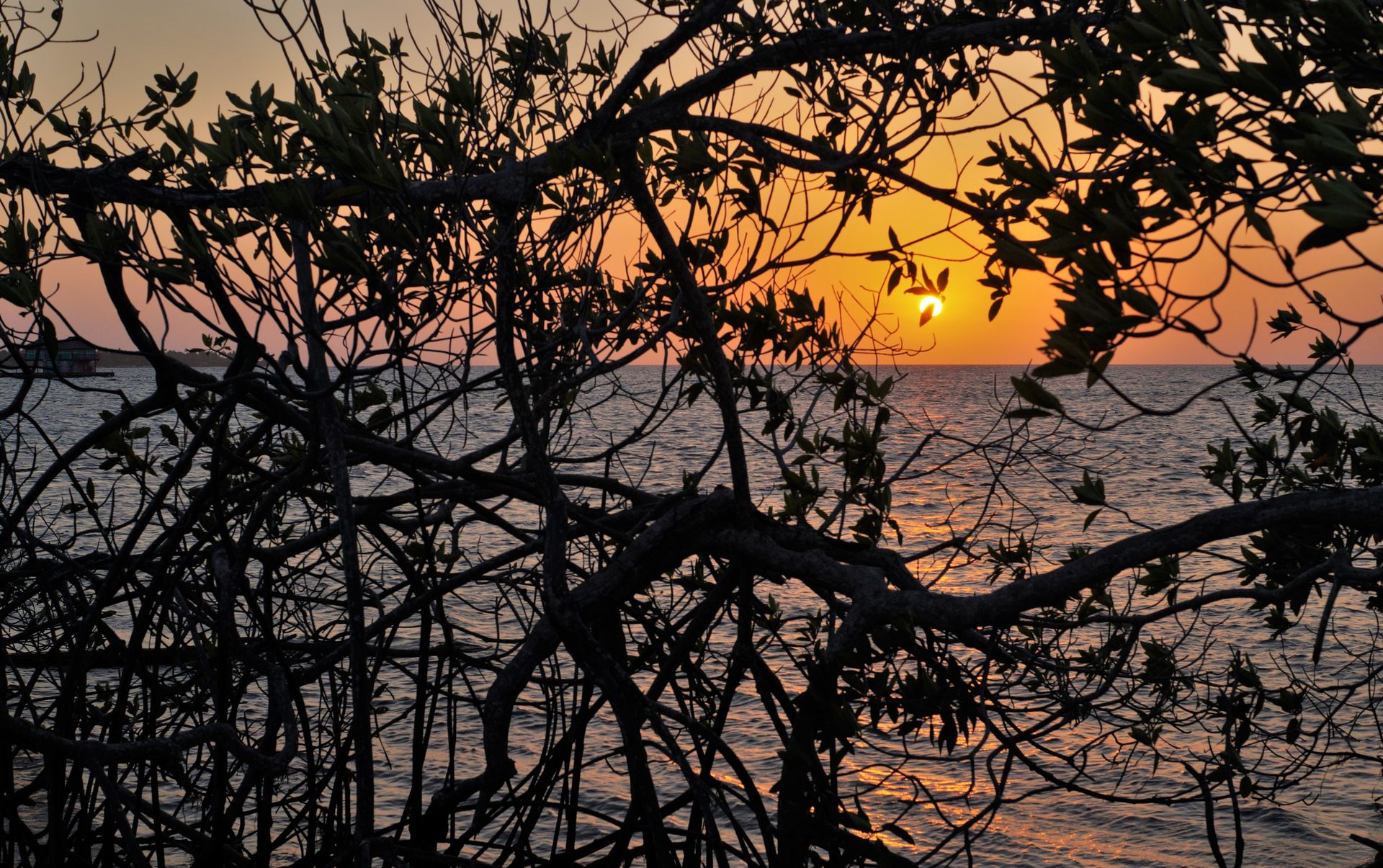
Behind the hostel, there was a small lounge area with many hammocks, and there was a small beach accessible through a passage through the mangroves, where we could enjoy the sunset every day. On the front side of the hostel, there was the dining area, a bar, the pier, and of course, the sea. Some activities in the vicinity of our island were also offered, and we took advantage of a few of them. We were accommodated in a private room with a comfortable bed and a mosquito net. We even had a small air conditioner, but unfortunately, the power socket didn't work.
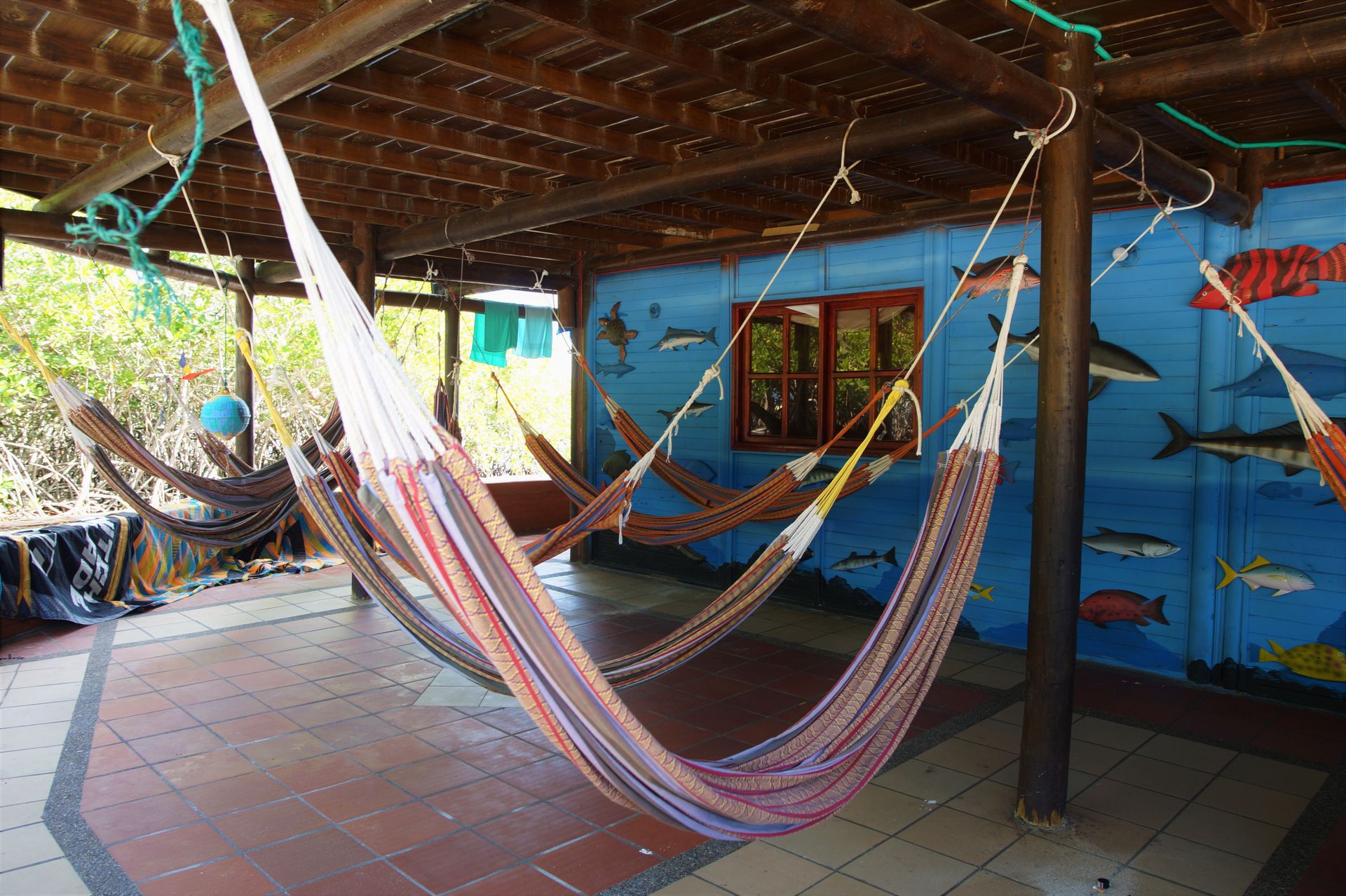
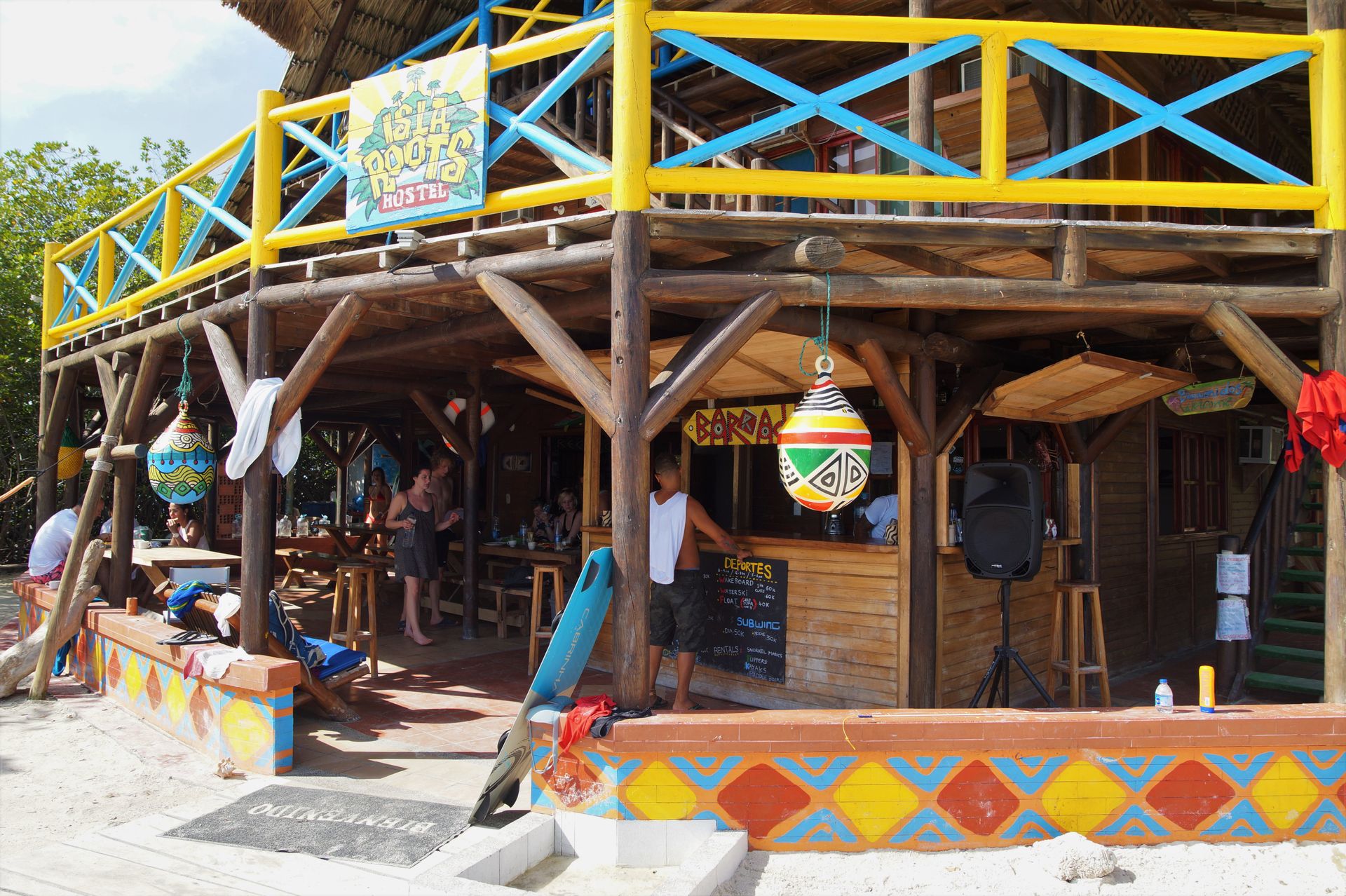
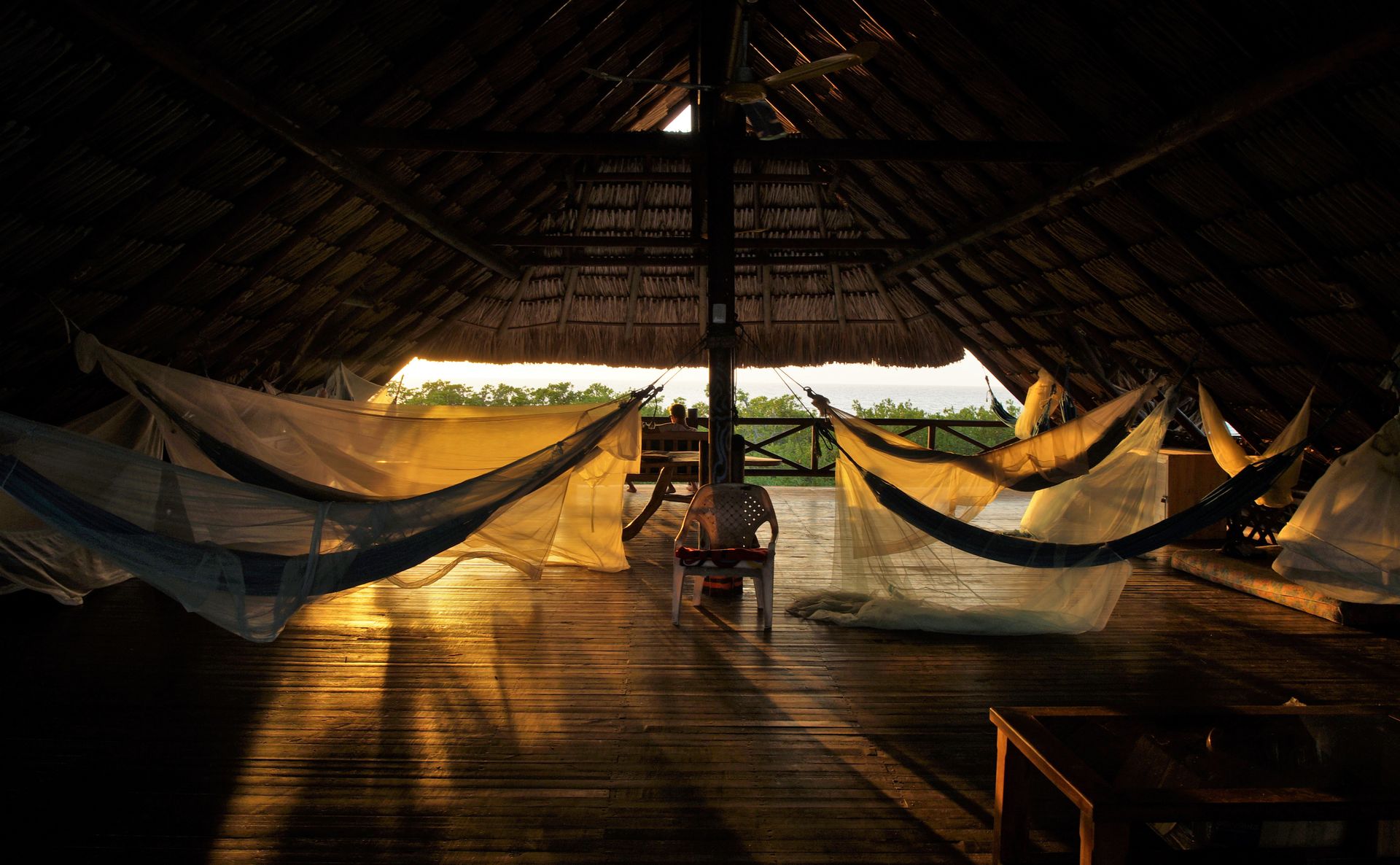
After all the stress of the journey, we immediately changed into our swimwear - we didn't need anything else here. Even flip-flops were too much. Everyone walked barefoot. The only thing you had to get used to was having sand on your feet all the time. No matter how much the staff cleaned, within 10 minutes, the floor was full of sand again. So, on the first day, we spent our time swimming and chilling. For the evening, we signed up for the plankton tour. Luisa had already raved about it during the tour and assured us that it would definitely be worth it. Well, the same couldn't be said about the showers either...
During dinner, we talked to a German couple who had already spent one night here in the hostel. They explained how things worked. The hostel actually had quite a lot of staff, so there was almost always a 1:1 ratio between guests and staff. However, the staff was mainly made up of volunteers who more or less motivated themselves to take care of the guests' well-being. When the Germans showed us the hostel's manager, everything became clear. He was standing behind the reception counter, playing his guitar with tiny eyes, waiting for one of the volunteers to pass the joint around. The German couple had actually planned to go on the announced plankton tour the evening before, but it never took place because all the staff was too stoned. The only motivated workers were the local employees in the kitchen, behind the bar, and on the boat motors.
That evening, we had more luck, and two full boats set off with a bit of a delay for the plankton tour. Our boat was the first to depart, and our helmsman desperately tried to start the engine. However, it didn't work, and so we slowly drifted into the darkness until our boat was stopped by mangrove trees. The second boat came to our rescue and hooked us up with a rope, just like with cars. After a few minutes of driving, we found the perfect spot and put on our diving masks and went into the dark water. A tarpaulin was stretched between the boats to block the moonlight - we had almost a full moon that night. When we made movements with our hands in the dark water, the plankton shimmered and lit up brightly. We were told that it was beautiful - I found it totally ridiculous and for the price we paid, it was a real joke. At least now we know that we will never go on a plankton tour again...
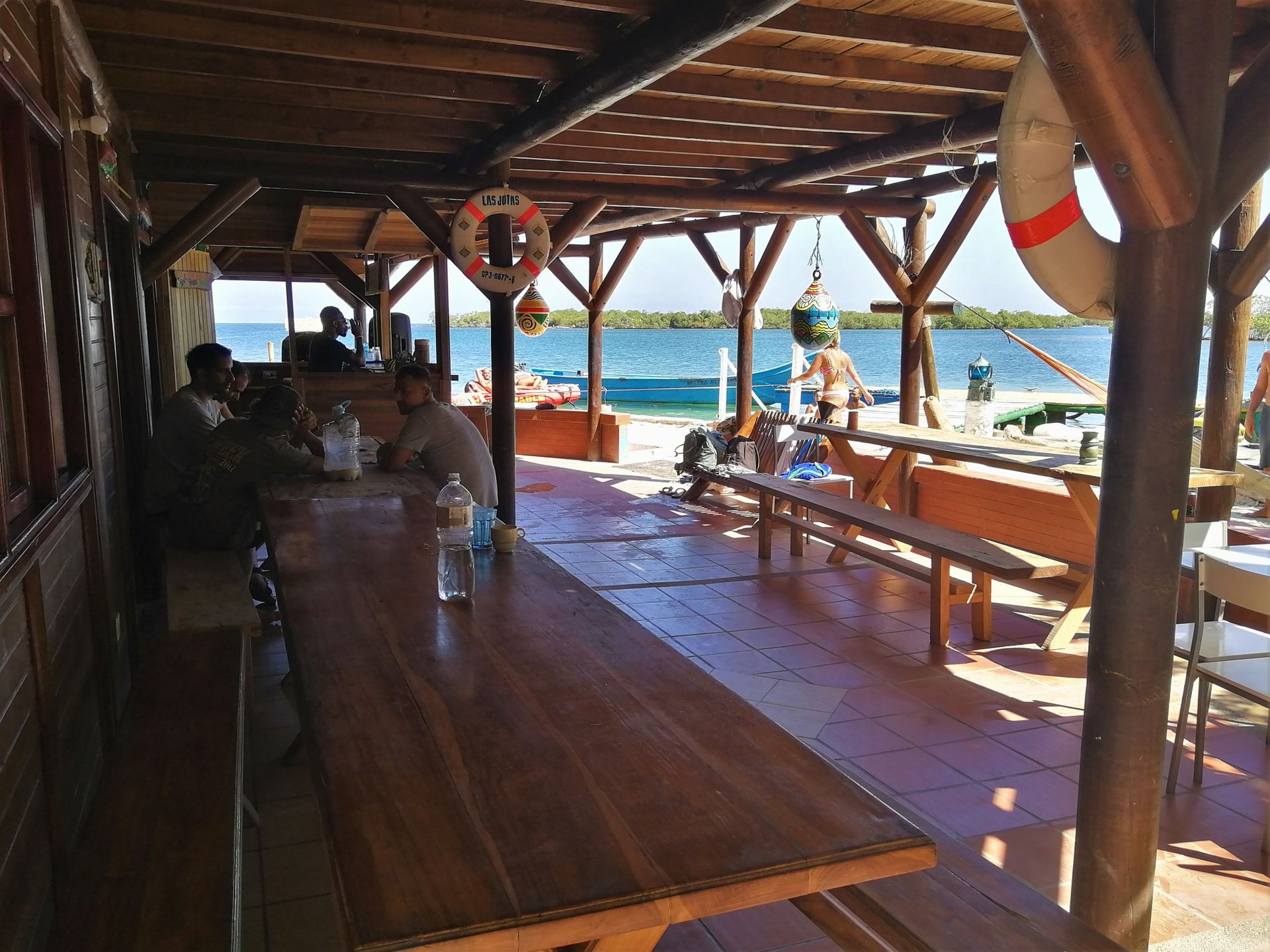
We spent the next morning very comfortably, learning Spanish and reading books. When it got too hot, we simply jumped into the water from the pier. I spent a lot of time with the slackline that was stretched over the water. There were also some small local children on our island from time to time, who were taken along by their mothers or grandmothers who worked in the kitchen. One of them was Neymar, who loved to jump into the water. Unfortunately, he couldn't swim and didn't like wearing a life jacket either. As long as an adult was nearby, he jumped into the water with a wide grin on his face and kicked his feet until he was lifted up again. After that, he gave instructions on which spot he wanted to jump into the water next. We played with him for quite a while until someone else took over! :)
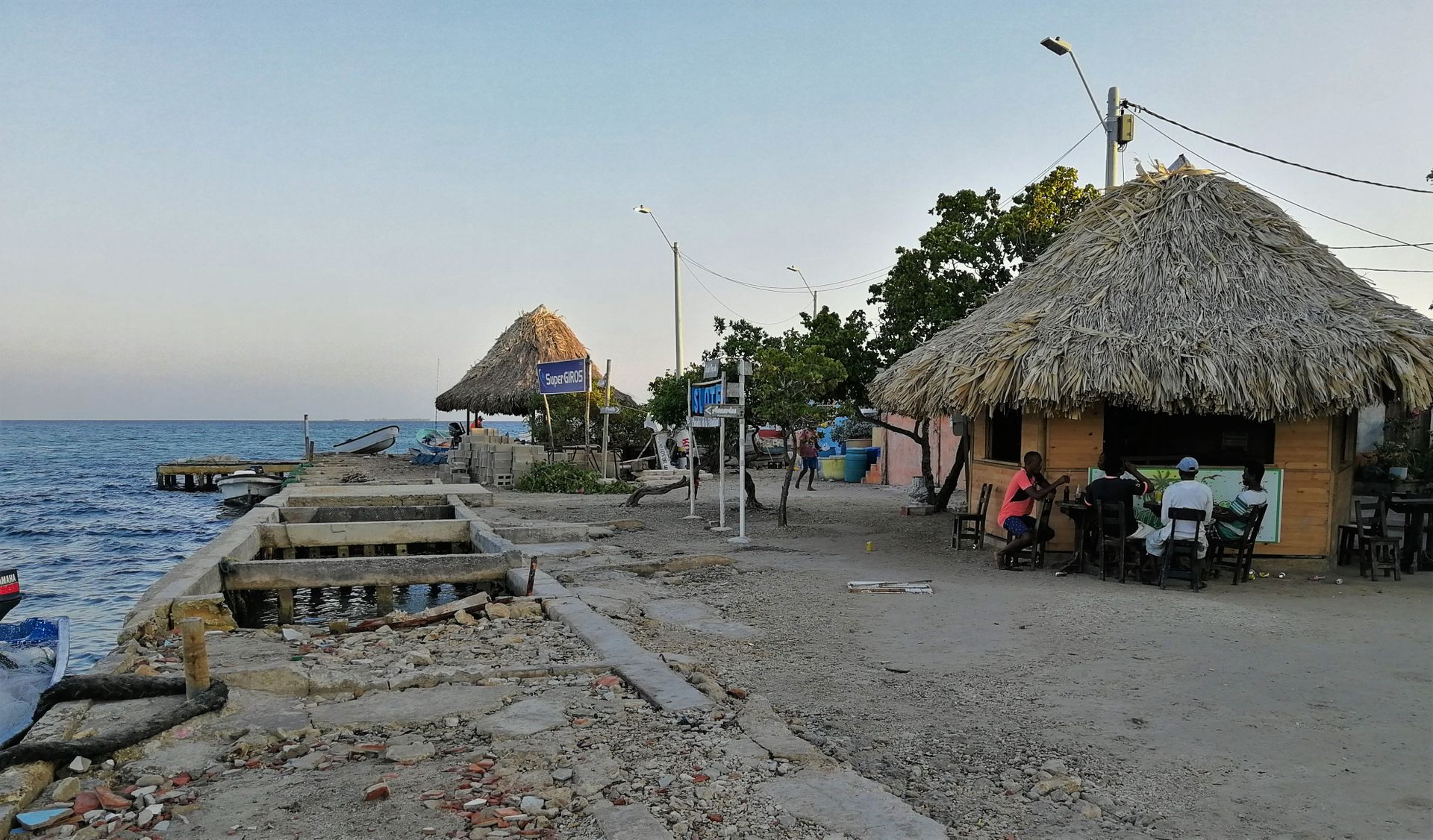
In the afternoon, we took a little trip to the nearby island of 'Santa Cruz del Islote'. It is known as the most densely populated island in the world - over 500 people live on just one hectare of land. We were welcomed by an older gentleman and took a short tour of the island. The people here mainly make a living from tourism - apparently fully loaded tourist boats come there regularly - it sounds like a trip to a bizarre human zoo. The island itself is not particularly exciting: everything seems very rustic and quite poor. Apparently, the inhabitants thought they had to offer something to the tourists, so they created a kind of aquarium. It contains quite a lot of fish and two big sharks. Even a puffer fish swims up and down. However, the sharks seem to be the main attraction for the tourists. They, however, lie motionless on the seabed and appear very lethargic - no wonder, they have hardly any space to move around. Our tour guide told us that they are aware that the sharks are not kept in a species-appropriate manner. But they need them for the tourists. After one year, the sharks are released again and new ones are caught. He also offered us the opportunity to "swim" in the tank with the fish and sharks - we declined. I think he already realized in advance that he shouldn't have made that remark to us.
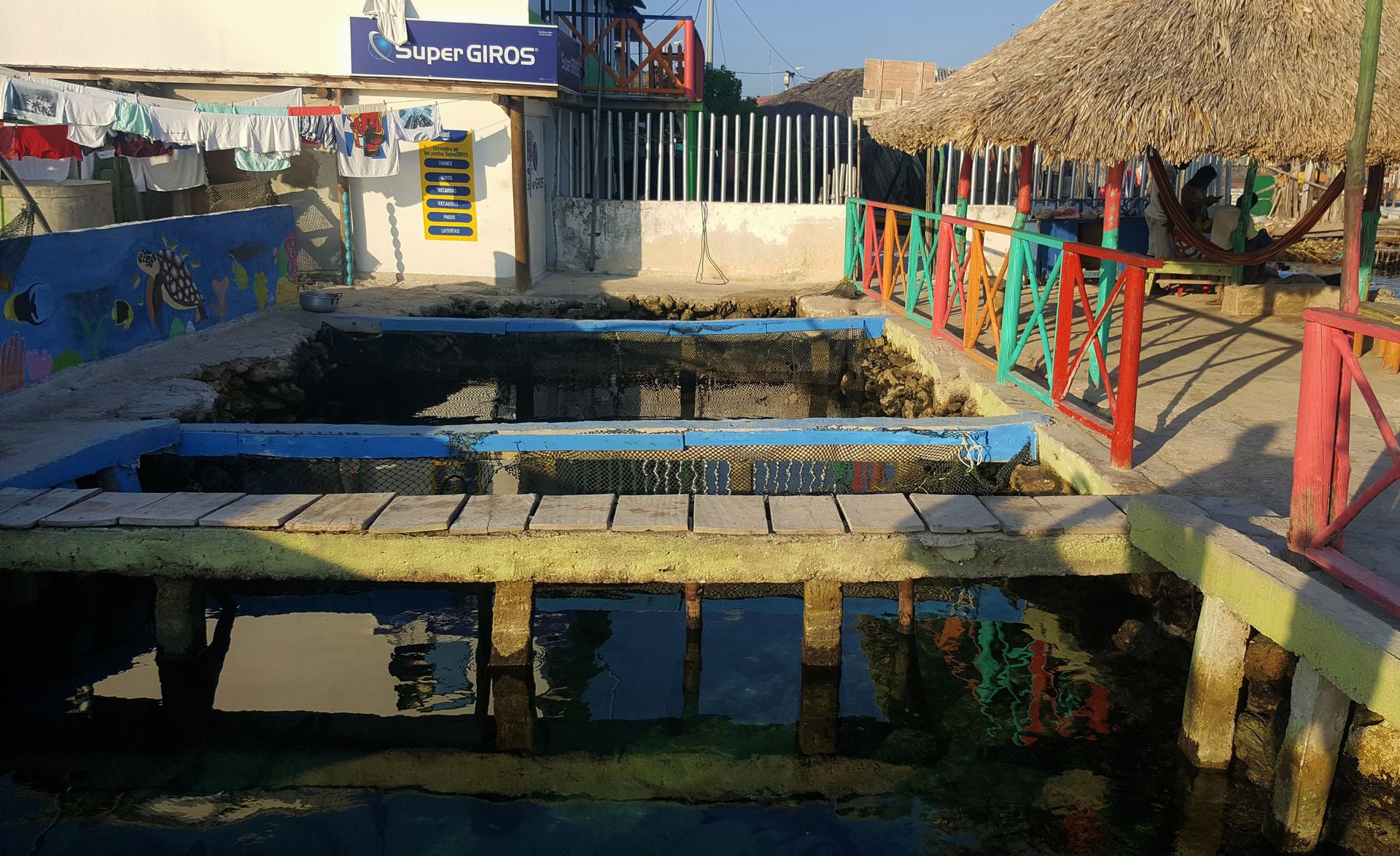
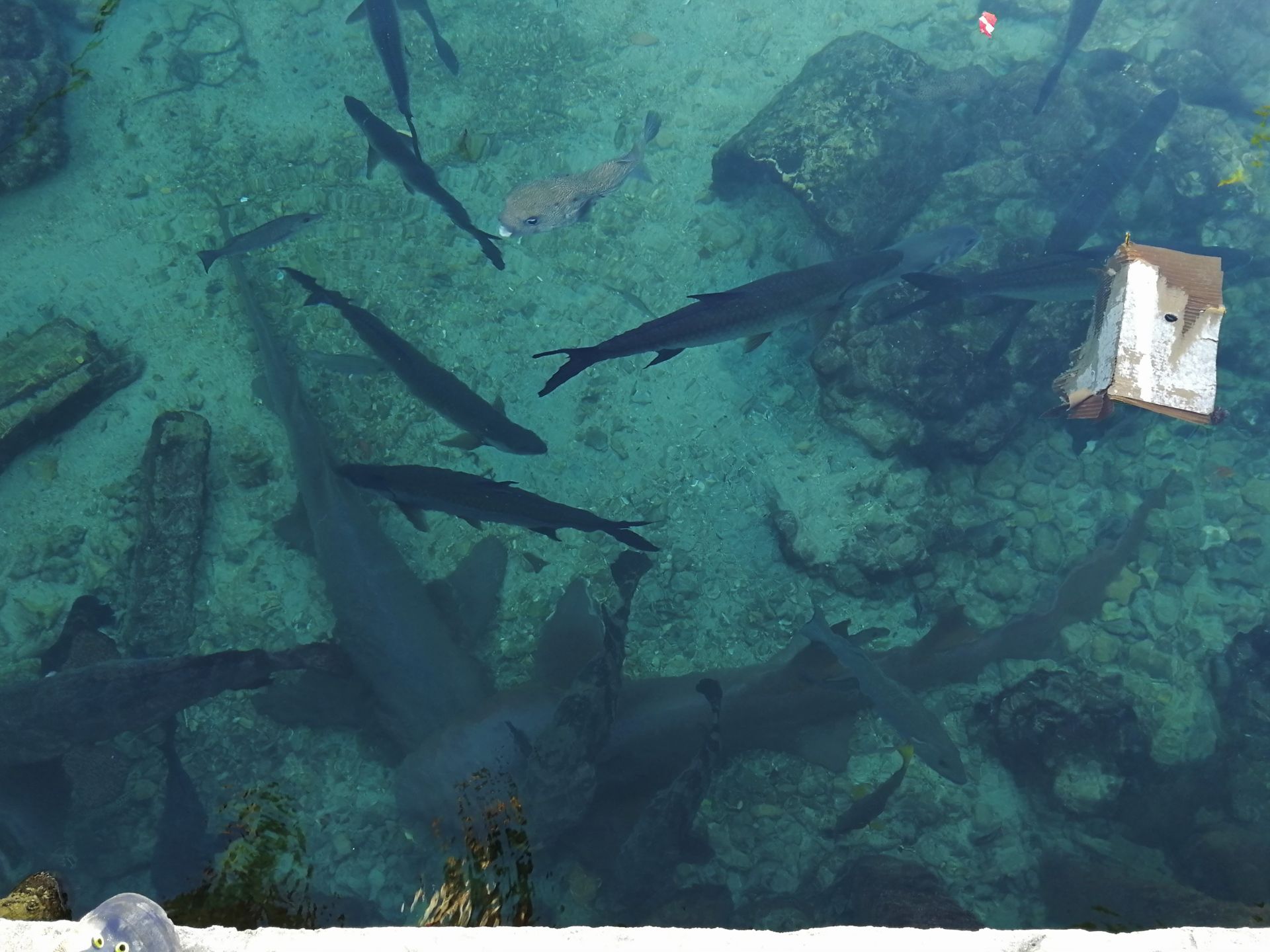
As we strolled through the streets, we suddenly noticed that something was attracting the attention of some island residents around a corner. They crowded together closely, shouting or laughing, and a few waved us closer. We looked around the corner and also noticed the reason for the excitement: in the middle of the people, a cockfight was taking place. Emi and Luisa immediately turned around again, as the sight was not particularly pleasant. The fight didn't last much longer, as one rooster was already lying on the ground and was being attacked by the other. The organizers then ended the fight, the roosters were taken away by their owners, and the betting winnings were handed out. Upon inquiry, our guide stated that the fights are not fought until the roosters' deaths. However, I did see the blades attached to the roosters' feet. I'm pretty sure that occasionally there are fatal incidents involving them.
We were also shown the school on the main square of the island. During our stay, we saw a lot of children playing on the streets and squares. I think the reason for this is relatively simple, and I immediately wondered what role incest plays on the island. But I didn't dare ask our guide about it. Later on, he mentioned on his own that a few years ago, a very important man died on the island. He left behind a total of 123 grandchildren from 23 children with 4 women. Emi said she also saw some children with disabilities on the island. Although many island residents have relationships outside the island, it is likely that sometimes someone catches a relative...
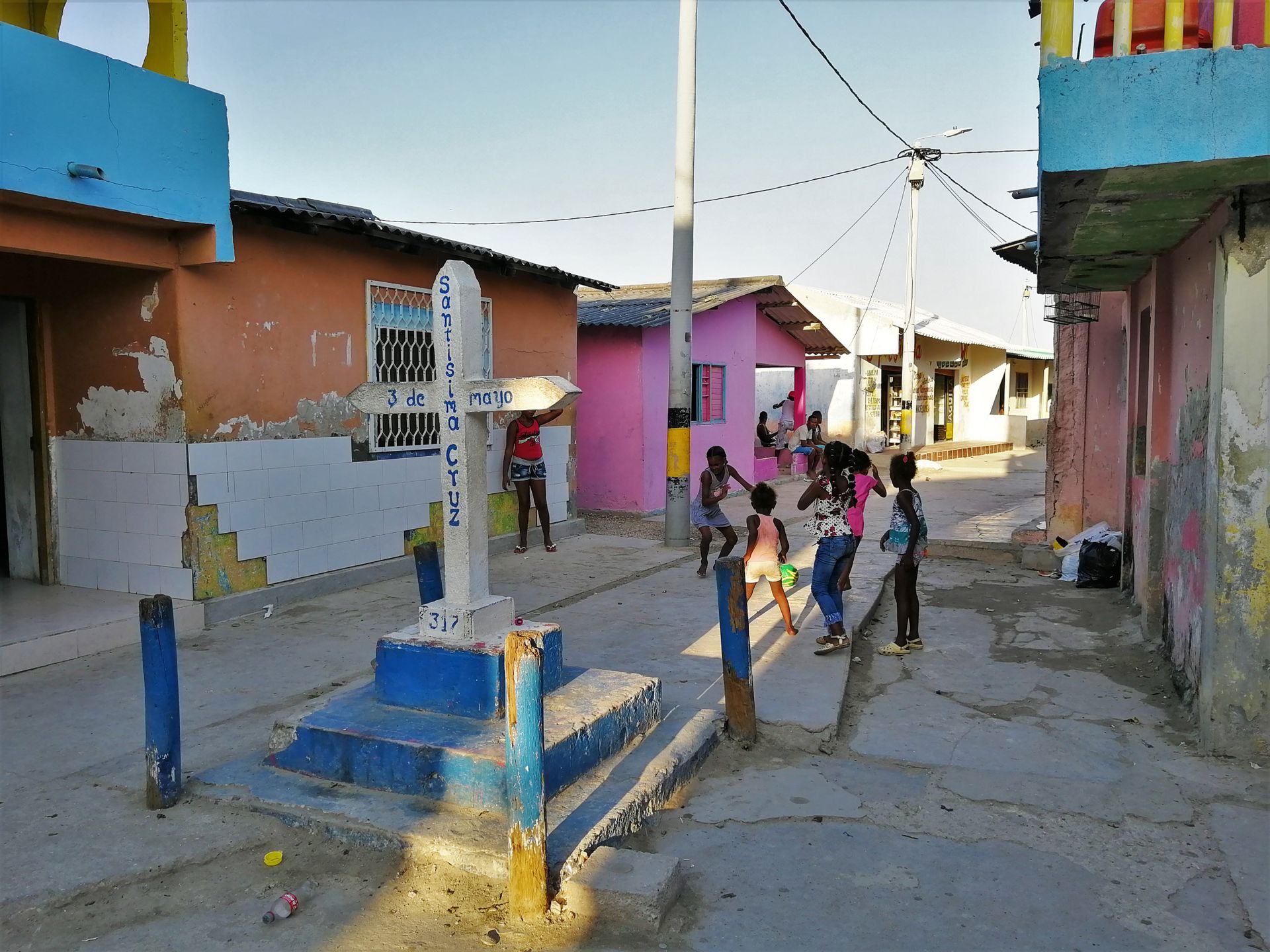
On the island, there is also a "hospital", but it is not permanently staffed. However, there is always someone available for medical emergencies. There is also a police officer on the island. The garbage is collected once a week, and of course, there is also a church with a pastor. Electricity on the island is generated, among other things, by solar panels. Each household pays a very small amount and gets 6-8 hours of solar power per day.

We also took advantage of our trip to buy some snacks. Then we paid the guide and returned to our island. The local employees at our hostel all live on Islote, but they spend most of the day at the hostel - they were always there before breakfast and some stayed until the last guest went to bed.

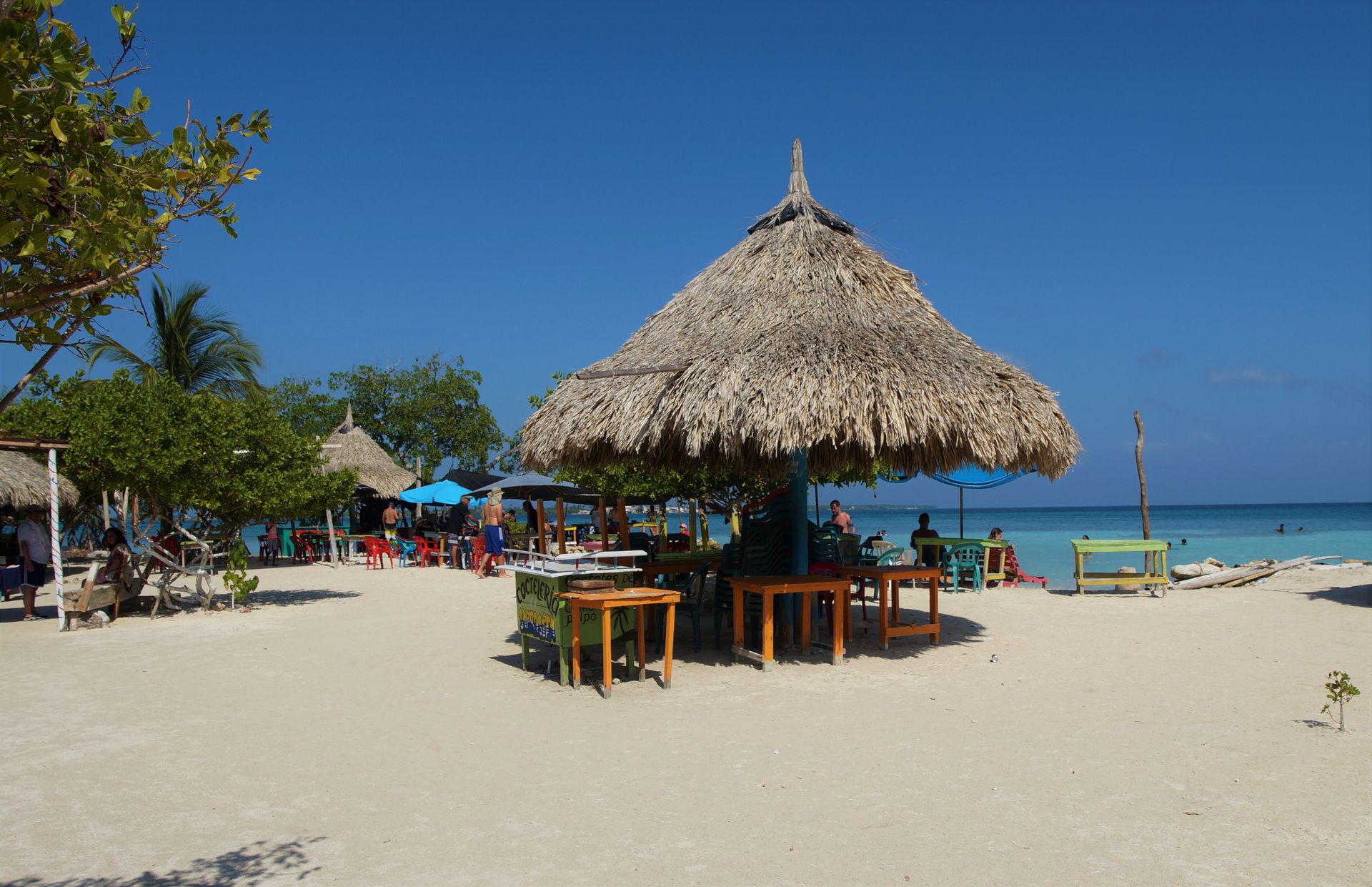
The next day, we booked a boat that took us to the neighboring island of 'Mucura'. Four other hostel guests accompanied us. On this island, there are a few luxury hotel complexes with the finest private beaches. However, there is also a public area that day visitors like us can use. Upon arrival, we were welcomed by a local who explained that he was the operator of the only restaurant on the island and if we wanted to have lunch, we had to order from him right away. We all felt overwhelmed and somewhat confused, but thought that we definitely needed to eat something and therefore ordered our lunch. Among other things, he promoted his delicious lobster, and since the price was significantly cheaper than in our hostel, we let ourselves be persuaded to order a portion.




Afterwards, we walked to the other end of the island, where it was a bit quieter and there weren't so many stalls lined up. We found a beautiful sandy beach with turquoise blue water, where we settled down and enjoyed an extensive stay in the sea.

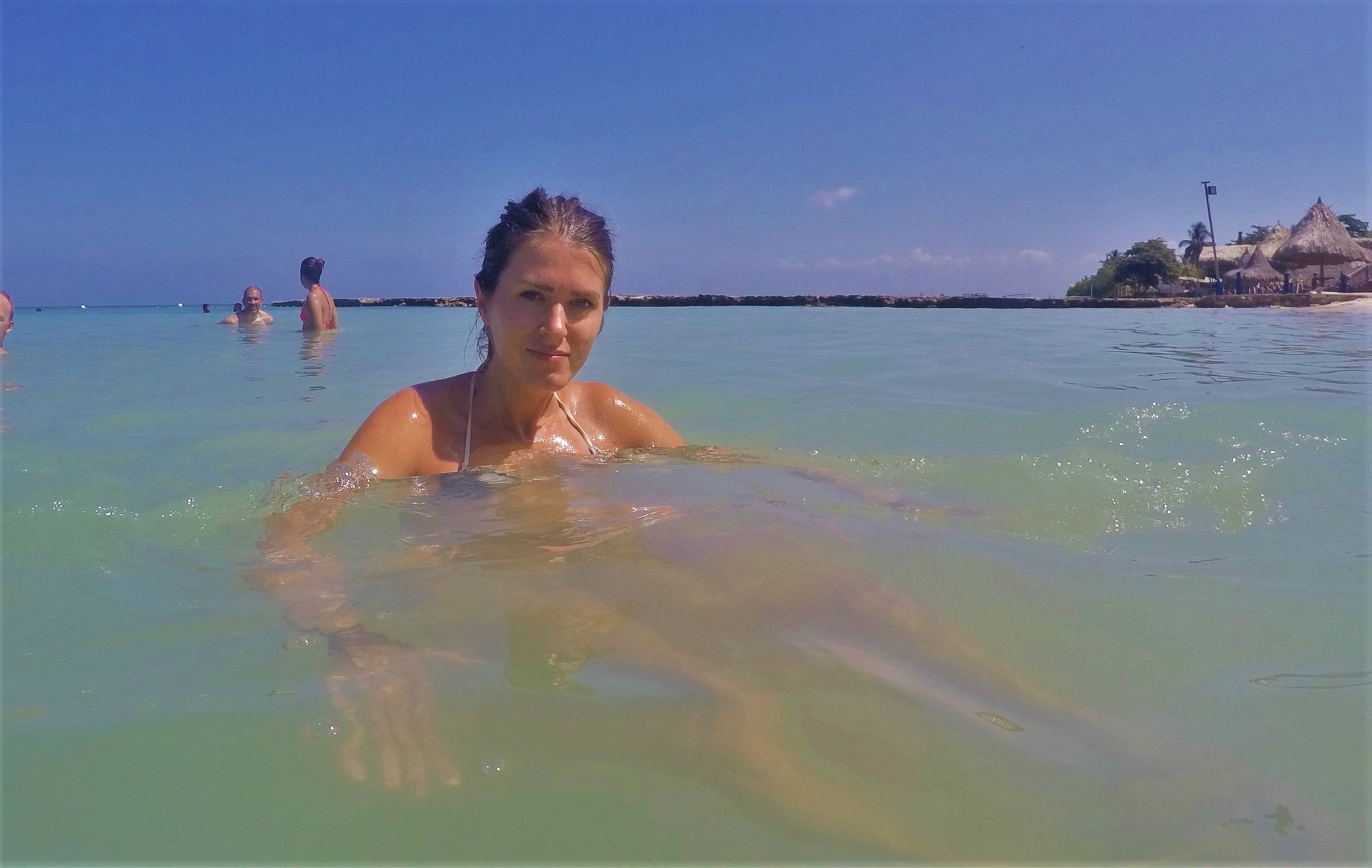


At lunchtime, we all returned to our ordered lunch. However, the lobster was not as big as announced - there were five small lobster halves on the plate. In general, our "waiter" had a talent for promising things that were only half fulfilled. Emi ordered a fresh coconut to drink - what she got was strawberry milk in a coconut. Not so great with lactose intolerance. When asked, he tried to convince us that all fresh coconuts on the island are served with milk and strawberry flavor. A Colombian who was with us then had an extensive discussion with him because he also got something different from what he had ordered. Emi was then eventually given a beer as an alternative, and through this incident, we realized that you have to be a bit more careful on the Caribbean coast not to be ripped off. My fish was ok, but I couldn't get excited about the lobster - it just didn't taste right to me. Emi enjoyed it more! :)

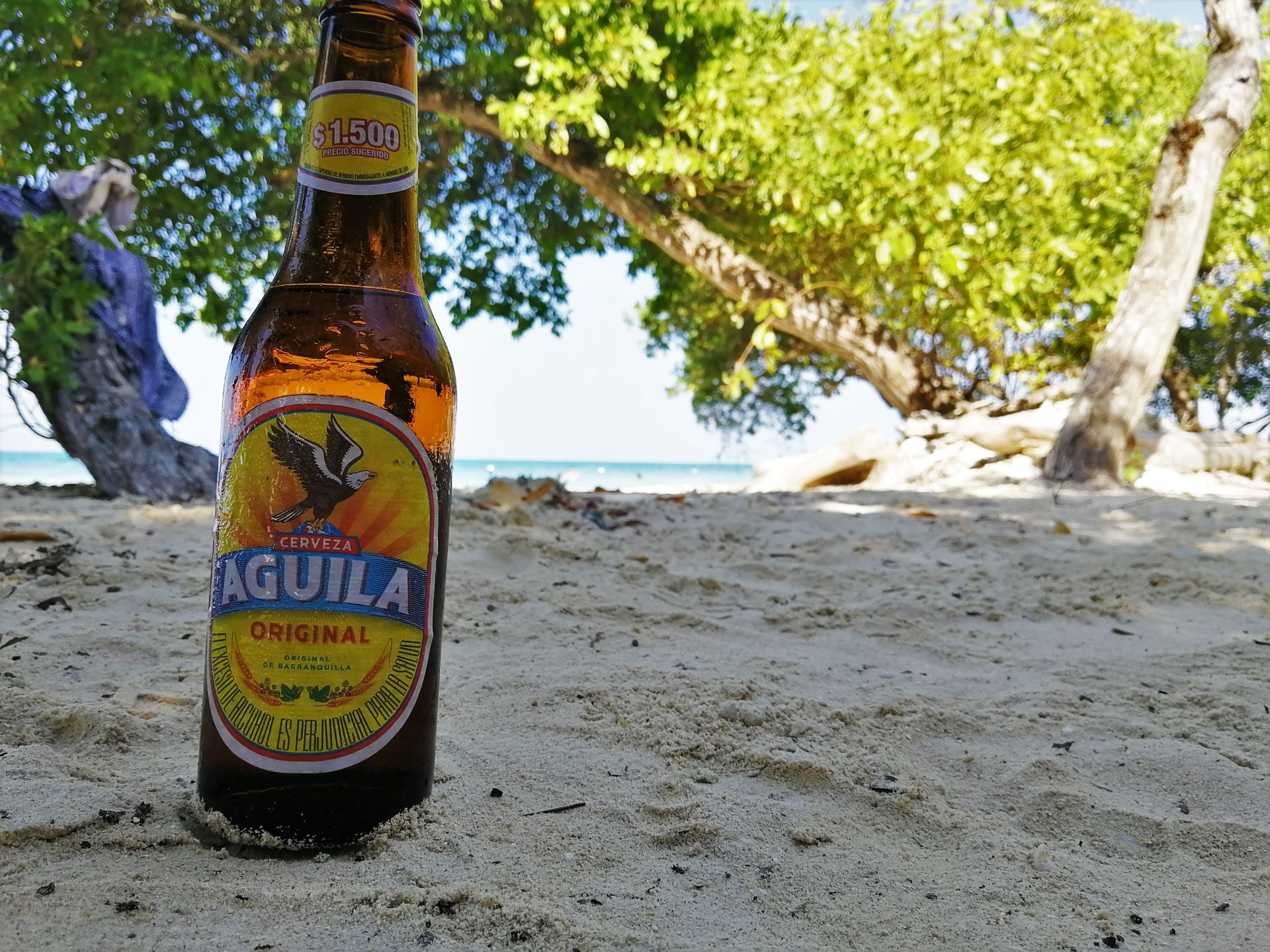
In the afternoon, we repeated our beach program and added the component of "cold beer".
Back at the hostel, Luisa encouraged us to do a very intense workout at sunset. We hadn't done such intense exercise in a long time and had to pay for it with some pain in the following days. Then we had a "shower" and dinner. In the morning, we had already ordered lobster for our last evening. At that time, we didn't know yet that there would be lobster for lunch as well. However, this time it was much bigger, and Emi got to enjoy it all by herself, as I preferred the fish. Lobster twice a day is not something that happens every day! As a bonus, we also had some cocktails that we enjoyed during a game night with other hostel guests.
The next day, we took the speedboat back to Cartagena, a two-and-a-half-hour ride. However, the sea was very rough that day, and we struggled with very high waves, unpleasant rumbling, and constantly getting water sprayed in our faces. We were very relieved when we finally had solid ground under our feet again!
Conclusion:
The hardships definitely paid off. A "private" small island in the middle of the Caribbean Sea is something special. The view and the swimming experience don't even need to be mentioned, I guess. We were actually glad that our hostel staff was relatively "relaxed". This never created a party hostel atmosphere, which we were actually very happy about. Despite the island being small, there was always a place where you could retreat and enjoy the peace and quiet. If you're into partying, you'll find plenty of opportunities right around the corner at the 'Casa en el Agua' hostel. This hostel has managed to be fully booked months in advance for some reason. We were glad that we didn't get a spot there!
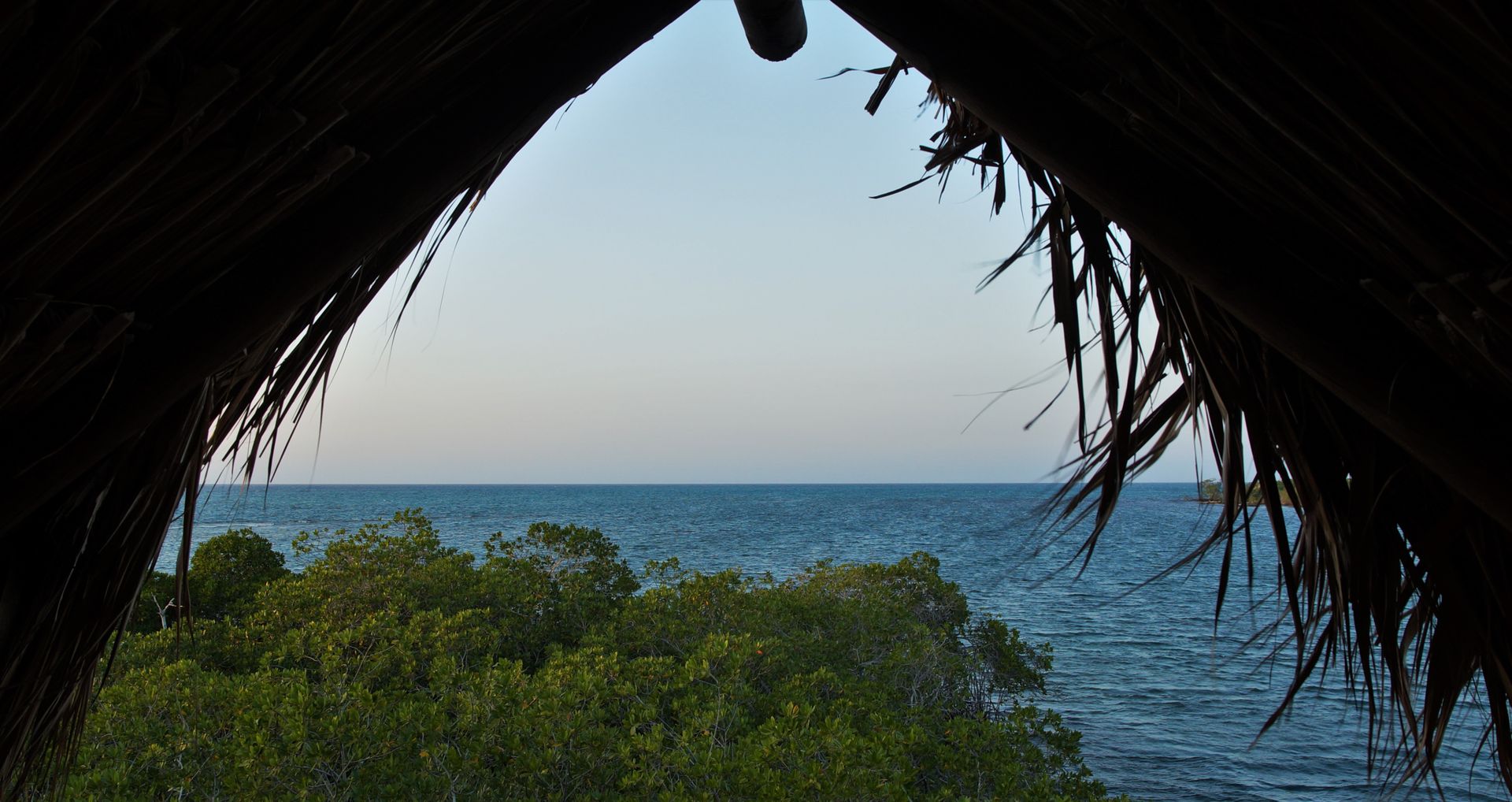
However, island life is a bit more expensive than life on the mainland. After all, many things - such as drinking water - have to be brought to the island separately. Still, we would have liked the sanitary facilities to be better equipped given the price we paid.
However, this made me realize for the first time that permanent access to clean and running water is not a given and that we can live perfectly well with very little water. In the future, we will be more conscious and sustainable in our water consumption!
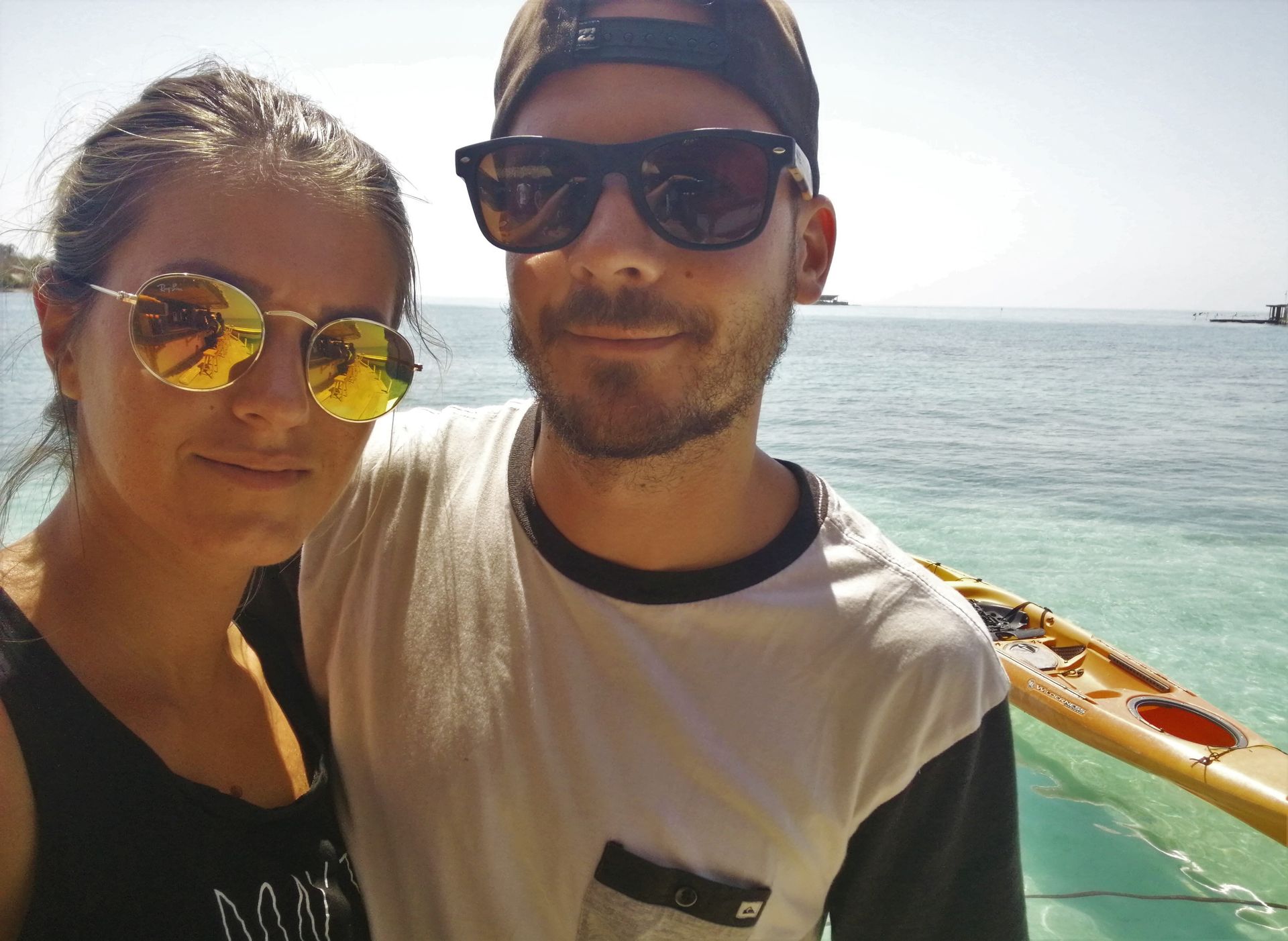
Hasta pronto!
E&L
>> Next stop: Santa Marta <<
Iscriviti alla Newsletter
Risposta
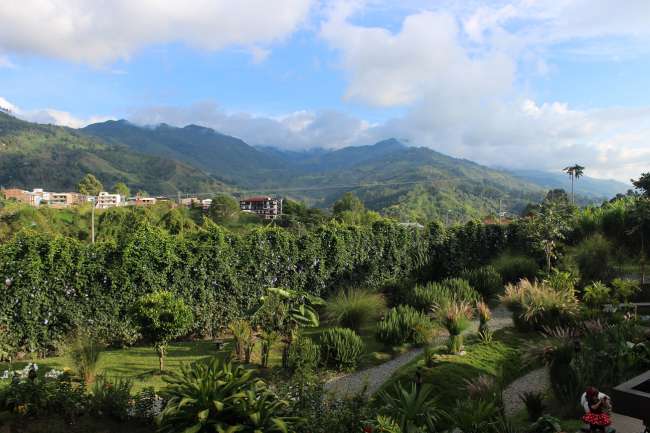
Rapporti di viaggio Colombia
